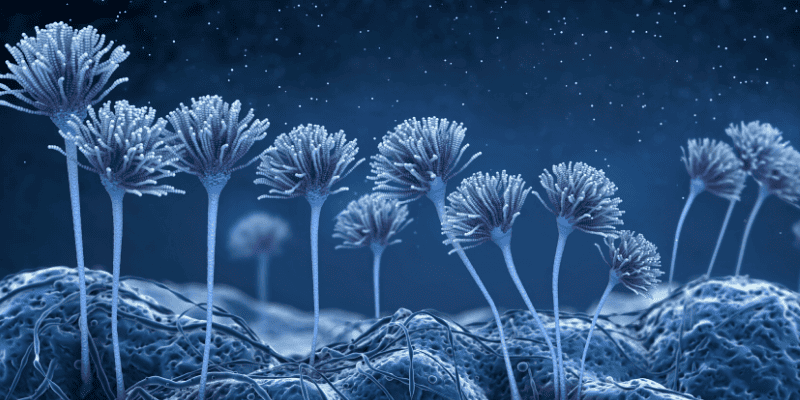The impact that environmental factors can play on human health can be drastic in many cases, as there are many people who suffer from conditions like allergies and asthma that are triggered largely by those environmental allergens and/or triggers that seamlessly float within the air. Typically, most individuals are able to control their exposure to these pesky environmental pollutants, by avoiding known places where their allergies and/or asthma is sparked. Additionally, these individuals may also take precautions like medication and other protective measures to fight off these pollutants if exposure does occur. However, what can be done when the source of environmental allergen exposure occurs in your home from rapidly growing mold in the environment?
Mold is a fairly common form of fungus that can develop inside homes where ideal conditions are present that will promote and facilitate the growth. The perfect conditions for mold growth normally involve moisture in any capacity, humidity, heat, and darkness to allow for the mold to evolve and spread rapidly throughout the environment. There are a large variety of mold species in the world, with an estimated 37 mold species and over 100,000 different varieties of these molds that can develop and grow in the environment. And when it comes to molds that are susceptible to growth in an indoor environment like a home, there are a few common ones like the well-known Alternaria.
In this article we are going to discuss more about the well-known household mold, Alternaria and learn more about an Alternaria allergy on human health for those exposed to this mold in their indoor environment(s).
What is Alternaria Mold
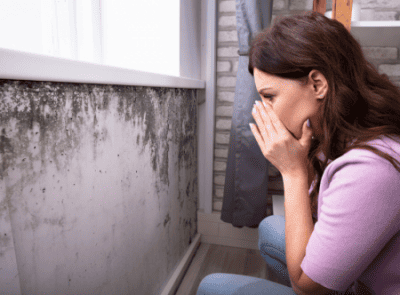 Alternaria mold has over 250 known species that are extremely common and widespread in different environments, both indoors and outdoors. This mold forms from the Alternaria plant pathogen, that has infected more than 4000 species of host plants and can lead to and cause significant damage to agricultural products like grains, fruits, and vegetables. As we said before, Alternaria genus mold contains over 250 known species, including Alternaria alternate (which is the most common form of this mold), Alternaria tenuissima, Alternaria infectoria, etc. These different species of Alternaria can grow in a range of environments with varying temperatures and moisture levels.
Alternaria mold has over 250 known species that are extremely common and widespread in different environments, both indoors and outdoors. This mold forms from the Alternaria plant pathogen, that has infected more than 4000 species of host plants and can lead to and cause significant damage to agricultural products like grains, fruits, and vegetables. As we said before, Alternaria genus mold contains over 250 known species, including Alternaria alternate (which is the most common form of this mold), Alternaria tenuissima, Alternaria infectoria, etc. These different species of Alternaria can grow in a range of environments with varying temperatures and moisture levels.
When Alternaria mold grows indoors it is likely to be found in carpets, wallpaper, textiles, window frames and air conditioning systems. When and if this mold forms in an indoor environment like a home, it will trigger allergic responses that will similarly reflect allergy symptoms upon exposure to this mold and its spores in the air. The Alternaria allergy season usually falls between spring through the summer months and this is typically when those individuals who suffer from allergies and/or asthma will begin to experience symptoms from Alternaria.
Where Does Alternaria Mold Grow
The versatile Alternaria mold can be found growing and thriving in many different environments and conditions, as it will freely float in the air and spread throughout the airspace. The season nor the location matters to Alternaria, as it will linger in the air on dry, windy days allowing it to be picked up by a breeze and become airborne into the air. When Alternaria floats in the air this allows for homes and other indoor environments to become susceptible to an invasion from this mold in the environment, as it will begin to look for a warm and humid indoor space to start its mold colony.
If this species of mold enters into your home, it will likely cling to your produce, houseplants, furniture, and even clothing. In addition, Alternaria can also form and grow under carpeting and inside walls in some cases. However, when this mold produces its spores into the environment they can circulate feverishly throughout the airspace and are often found growing in showers, basements, and in attics. Wherever there is higher than normal humidity levels for the mold to aggressively grow is where Alternaria mold spores attract to, and this environment will allow the mold spores to reach tens of thousands of spores per cubic feet, according to Mold Advisor.
Is Alternaria Mold Dangerous?
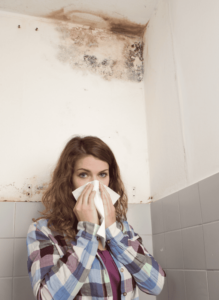 There are many species of mold that have been recognized and identified as a dangerous form of mold to both human health and the environment (as it can significantly alter the indoor air quality and lead to destruction of the walls and other surfaces in the home). One of the most infamous mold species is the notorious stachybotrys chartarum (black mold) that is known for producing toxic mycotoxins into the airspace that can severely impact the environment and the health of those largely exposed to these hazardous toxins in their air. Additionally, other forms of mold like Alternaria can also present dangerous effects into the indoor environment of a home and to human health overtime as exposure progresses.
There are many species of mold that have been recognized and identified as a dangerous form of mold to both human health and the environment (as it can significantly alter the indoor air quality and lead to destruction of the walls and other surfaces in the home). One of the most infamous mold species is the notorious stachybotrys chartarum (black mold) that is known for producing toxic mycotoxins into the airspace that can severely impact the environment and the health of those largely exposed to these hazardous toxins in their air. Additionally, other forms of mold like Alternaria can also present dangerous effects into the indoor environment of a home and to human health overtime as exposure progresses.
Can mold make you sick? Alternaria has been known to cause certain health problems in individuals who are exposed to the mold in their personal indoor environment, and these health effects can vary depending on the amount of mold in the environment, the duration of exposure, and the ventilation and air flow within this indoor space. This type of mold species will produce mycotoxins into the environment, similar to black mold, which can affect the respiratory system, skin, and nails, according to Mold Busters. Alternaria will produce an allergenic pollutant into the air, also known as mold spores, that will trigger asthma/allergy attacks in those people who are prone to these health conditions, and thus is why the term Alternaria allergy has formed and is suffered by those who are stuck dealing with this species of mold in their homes.
Allergy to Alternaria Alternata
Did you know that Alternaria alternate is one of the most common funguses associated with asthma and allergies, but primarily asthma? The presence of this mold will not only lead to the development of asthma but also the persistence and severity of already pre-existing asthma issues in those who have been strongly sensitized and exposed to this mold species. The Alternaria alternate spores produced from this species of Alternaria mold are a well-known biological contaminant and a very common potent aeroallergen source in the environment. According to ScienceDirect, they state the following about Alternaria alternata allergy;
“An effect of human exposure to fungal aeroallergens, sensitization to A. Alternata has been unequivocally associated with increased asthma severity. In addition, this fungal allergy has been described as a major allergen that is a major contributor to mold allergies.”
The Alternaria allergen can also affect those individuals with sensitive and compromised immune systems that can cause serious infections in the respiratory tract along with other potential adverse health effects. These health effects will commence from exposure and/or inhalation of these Alternaria allergens and the mold spores produced into the air by this species of mold.
Alternaria Mold Health Effects
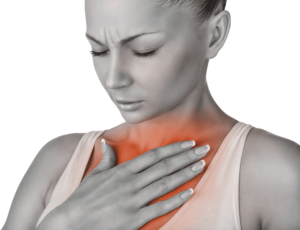 As we discussed previously, Alternaria is a type of mold that commonly causes allergic reactions in the body, especially when this form of mold is growing aggressively throughout the indoor environment of your home. The human body will identify Alternaria mold as an extremely dangerous foreign invader, which will trigger the release of antibodies from the immune system in an act to protect the health of an individual from this classified “threat”. The triggered antibodies will initiate chemicals like histamines, that bring on the allergic symptoms that many people with allergies suffer from daily. The typical allergic symptoms that will be triggered in the human body from Alternaria alternata mold can include sneezing, itchy and watery eyes, runny nose, congestion, coughing, and dry skin.
As we discussed previously, Alternaria is a type of mold that commonly causes allergic reactions in the body, especially when this form of mold is growing aggressively throughout the indoor environment of your home. The human body will identify Alternaria mold as an extremely dangerous foreign invader, which will trigger the release of antibodies from the immune system in an act to protect the health of an individual from this classified “threat”. The triggered antibodies will initiate chemicals like histamines, that bring on the allergic symptoms that many people with allergies suffer from daily. The typical allergic symptoms that will be triggered in the human body from Alternaria alternata mold can include sneezing, itchy and watery eyes, runny nose, congestion, coughing, and dry skin.
When it comes to health effects and risks produced from Alternaria mold, the most vulnerable people to this mold will include those with pulmonary diseases, asthma, allergies, and those with a weakened immune system. As an individual is exposed to this species of mold for a prolonged period of time, it has the potential to cause several health issues for most individuals, but it will affect the elderly, children, and babies more severely in most cases. If you begin to notice signs and symptoms that similarly reflect these when inside of your home, it is important to begin checking for this mold throughout your home because there is a higher chance that Alternaria is growing in this indoor environment.
How to Remove Alternaria Mold in Air
The process of removing any species of mold from your home’s environment including both the surfaces and the air can be a lengthy procedure that will require the help of specialists that are trained and capable of effectively and safely removing mold from an indoor environment. When it comes to the specific mold species of Alternaria, this type of mold species will produce and release mold spores and allergenic substances into the environment that will latch onto surfaces and hang around in the indoor air for an ambiguous amount of time, depending on the ventilation and air flow within the indoor space. It is important that once you identify mold growth through the mold identification process in your home or begin to experience health effects like allergies in this environment that you quickly work to bring in a mold remediation specialist and air quality solutions to remove the Alternaria mold in your home’s surfaces and in the air.
A mold remediation specialist is a professional that is trained at removing mold from surfaces in an indoor environment both safely and effectively using specific methods to provide a full-remediation of the mold species. This type of mold specialist follows a set of procedures that include wearing safety gear, sealing off the contaminated mold area, and using professional-grade equipment to remediate and remove the mold from the surfaces. Although these specialists are critical to the removal of mold from the surfaces of your home, there is little focus being put onto the indoor air quality and the potential mold spores and allergens floating within this airspace that can affect human health.
Alternaria Mold Spores
Just like other types of molds, Alternaria is a species of mold that is well-known for producing allergenic substances into the air that will include the reproductive spores emitted from this type of mold. Mold spores are small reproductive seeds that are produced and emitted from mold species, and these tiny spores are known hazardous airborne pollutants to human health if exposure occurs. These small mold spores’ range in size from 3 to 40 microns in size and can easily spread throughout an indoor environment rapidly. The dangerous component of these spores is the easy risk of these spores entering into the human body and reaching to the deepest recesses of the lungs, which can cause significant issues to health.
Mold Air Purifier for Spore and Allergen Removal
The best solution to implement into your home to combat airborne mold spores and allergens is the use of a mold air purifier. An air purifier is a device that works to filter the indoor air by using an air filtration technology to trap and remove pollution from the air. These devices, depending on the model and brand, can also be utilized to remove and destroy microorganisms like mold spores that can be collected in the indoor air. The EnviroKlenz Mobile UV Model is an efficient air purifier that was designed to filter out a variety of airborne pollutants from the air using a two-stage filtration process that also includes the use of ultraviolet germicidal radiation lights (UV-C).
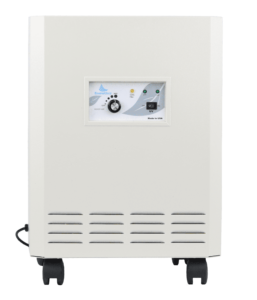 The EnviroKlenz Mobile UV Model has two stages of filtration; (1st stage) is the EnviroKlenz Air Cartridge that is imbedded with the EnviroKlenz proprietary earth mineral technology that works to capture, contain, and neutralize a broad spectrum of pollutants in the air including noxious and toxic chemicals and odors (like VOCs), the (2nd stage) filtration is a hospital-grade HEPA filter that is effectively able to filter out fine particulate matter larger than 0.3 microns in size at a 99.99 percent efficiency – this includes the collection of mold spores and other small microorganisms on the filter. Strategically placed in between the two stages of filtration in the EnviroKlenz Mobile Unit are UV-C lights that shine directly onto the HEPA filter to provide the capability for mold spores and other microorganisms to be killed on the collection site of the HEPA filter in the air purifier.
The EnviroKlenz Mobile UV Model has two stages of filtration; (1st stage) is the EnviroKlenz Air Cartridge that is imbedded with the EnviroKlenz proprietary earth mineral technology that works to capture, contain, and neutralize a broad spectrum of pollutants in the air including noxious and toxic chemicals and odors (like VOCs), the (2nd stage) filtration is a hospital-grade HEPA filter that is effectively able to filter out fine particulate matter larger than 0.3 microns in size at a 99.99 percent efficiency – this includes the collection of mold spores and other small microorganisms on the filter. Strategically placed in between the two stages of filtration in the EnviroKlenz Mobile Unit are UV-C lights that shine directly onto the HEPA filter to provide the capability for mold spores and other microorganisms to be killed on the collection site of the HEPA filter in the air purifier.
Article Sources:
- Mold-Advisor: Alternaria Mold in the Home (link)
- Mold Busters: Alternaria (link)
- ScienceDirect: Alternaria alternata allergens: Markers of exposure, phylogeny, and risk of fungi-induced respiratory allergy (link)
UV Mobile Air System
✓ Patented earth mineral technology works to attack VOCs and break them down on a compound level
✓ No chemicals or masking agents
✓ Will not release any chemicals back into your environment
✓ UVC lamps are continuously shining on the collected organisms with high effeciency of kill and destruction
EnviroKlenz® Medical Disclaimer:
“Any information that is provided on this website is not for the use by any commercial or personal entity without expressed written consent of the blog author. The material and statements illustrated within this blog are not intended to diagnose, treat, cure, or prevent any diseases or medical conditions. Nor does the author in any way guarantee or validate the validity, totality, or efficacy of any claims and will therefore not be held responsible for the content of any claims. Always consult your medical physician for any specific medical advice or recommendations.”








